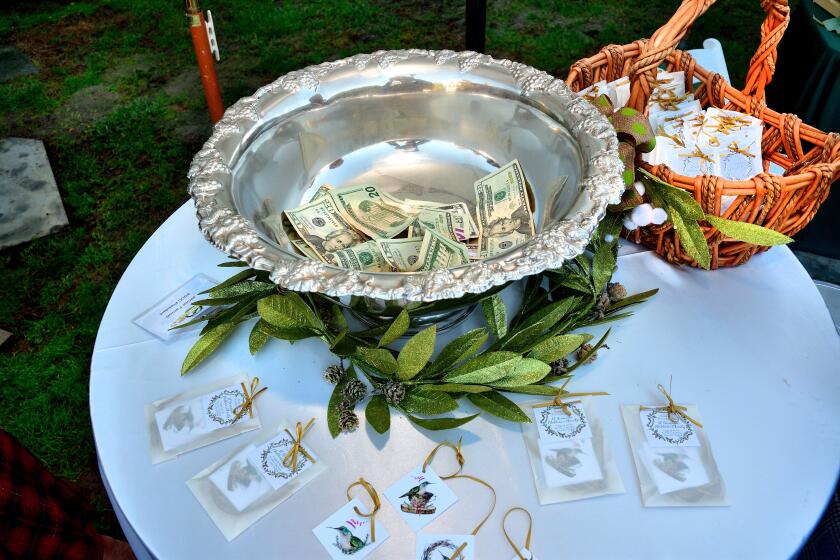Sea lions on the move in La Jolla? Review of haul-out patterns seems to say so
This winter, droves of visitors gathered daily on the bluffs south of La Jolla Cove near Boomer Beach to watch the sea lions. But two years ago, those who wanted to take a photo (or an ill-advised sea lion-selfie) would gather on the beach at La Jolla Cove. And before that, it was on the bluffs along Coast Boulevard.
Reviewing recent news stories, La Jolla Light has reported about where the sea lions would congregate in large numbers and how the most popular haul-out spots have changed. While the sea lions continue to gather all across La Jolla Cove, the areas in which they are most dense appears to have shifted.
Weighing in on the subject are marine mammal experts Doyle Hanan and Mark Lowry, and the La Jollans who’ve witnessed the evolution. None could say definitively whether there is an organized move — or why — but said sea lion behavior, and observation of the numbers of sea lions in La Jolla, could support the idea.
Hanan said he’s noticed that sea lions seem to be focusing on different areas, and that this is likely because they want to get away from people.
“They started moving away from the bluff area below the restaurants on Coast Boulevard. Now, they are mostly hauling out on the bluffs under the Bridge Club,” he said. “I believe they moved from the bluffs because there were so many sea lions, so much harassment from people wanting to take pictures with them or of them. I doubt they are moving because of (being scared of) people, but harassment does impact their presence. And I don’t think they are gone for good.”
Lowry, a 37-year research biologist for the National Oceanic and Atmospheric Administration, who monitors pinniped populations, added: “It’s common behavior for sea lions to move to avoid disturbance. I’ve seen this happen at other places in the past, such as the Channel Islands.”
The last five years
Although the sea lion colony was already on the rise, the animals noticeably started hauling-out (coming to land to rest) in La Jolla in 2013. At the time, they were congregating on the bluffs under Coast Boulevard to the chagrin of businesses affected by the strong stench from their waste.
By the summer of 2013, their smell had gotten so pungent, former San Diego Mayor Bob Filner initiated a program to spray a microbial agent that eats guano on the rocks (the spraying, by the way, still continues three times a month).
By winter, a lawsuit had been filed (but was unsuccessful) arguing the City has the responsibility to remove the excrement.
At the very end of 2013, a gate went in along the fence parallel to Coast Boulevard, allowing people access to the bluffs, which lasted throughout 2014.
By 2015, the sea lions had moved to the beach at La Jolla Cove, unnerving swimmers and divers. La Jolla Town Council hosted a forum during its April meeting to explore sea lion biology, habits, negative interaction with humans and possible water contamination. The Council formed a sub-committee to meet with local leaders, hoping to find a solution or have the sea lions removed.
In May 2015, the La Jolla Parks & Beaches advisory group gave the City a deadline to remove the sea lions from La Jolla Cove beach, citing concerns with pinniped interactions with people, and the possible health effects from being exposed to feces.
In response, the City contracted Hanan to study the area.
In June 2016, Hanan released what would become known as the “Hanan Report.” It notes 10 locations where sea lions haul out, including the bluffs under Coast Boulevard and the La Jolla Cove beach, and cited the possible detriments that could come from people getting too close to the animals.
In 2017, sea lions were observed hauling out south of The Cove beach, aka Boomer Beach, and on the bluffs in between. On the Boomer bluffs, there is different topography, including various levels of bluff edge, some harder for people to access.
Of the moves, La Jolla Cove Swim Club president Dan Simonelli anecdotally said numbers are down in area overall, and that “Human interaction could be a factor … in terms of them not being on The Cove beach and not being a problems as much on the bluffs.”
Megan Heine, co-owner of the Brockton Villa restaurant along Coast Boulevard, said she believes there is some movement, but it’s not permanent. “There used to be times we could see sea lions on the bluffs and in the water, but lately, we haven’t seen them as much. Some days, we don’t see any,” she said. “The population has been exploding over the last few years, so I think they could come back.”
Right now, numbers of sea lions present at La Jolla Cove are down overall, likely because the sea lions are looking for food near the Channel Islands, Hanan said.
City action
Seemingly contradictory to the installation of the gate leading to the bluffs where sea lions gathered several years ago (to allow pedestrian access to where the animals were hauling out), the City has posted signs encouraging people to stay away from sea lions.
In spring 2017, signs went up in Scripps Park above the La Jolla Cove beach area and near the bluffs at Boomer Beach with facts about seals and sea lions. In addition to the ways to tell seals and sea lions apart, the sign requests visitors stay a safe distance from them.
It reads: “Can I get closer? No! Seals and sea lions are wild animals. Disturbing hauled-out seals or sea lions is considered harassment, which violates federal law and leads to a citation. Sea lions have also bitten people who get too close or try to snap a photo. For your safety and the safety of the animals, please remain at a distance that does not frighten or disturb them.”
In January 2018, gates were installed at La Jolla Cove to keep sea lions from climbing the stairs to the lifeguard station observation deck, where they have reportedly come up to rest (and sometimes urinate and defecate), prompting worry that they could impede lifeguards carrying out their duties.
Get the La Jolla Light weekly in your inbox
News, features and sports about La Jolla, every Thursday for free
You may occasionally receive promotional content from the La Jolla Light.




